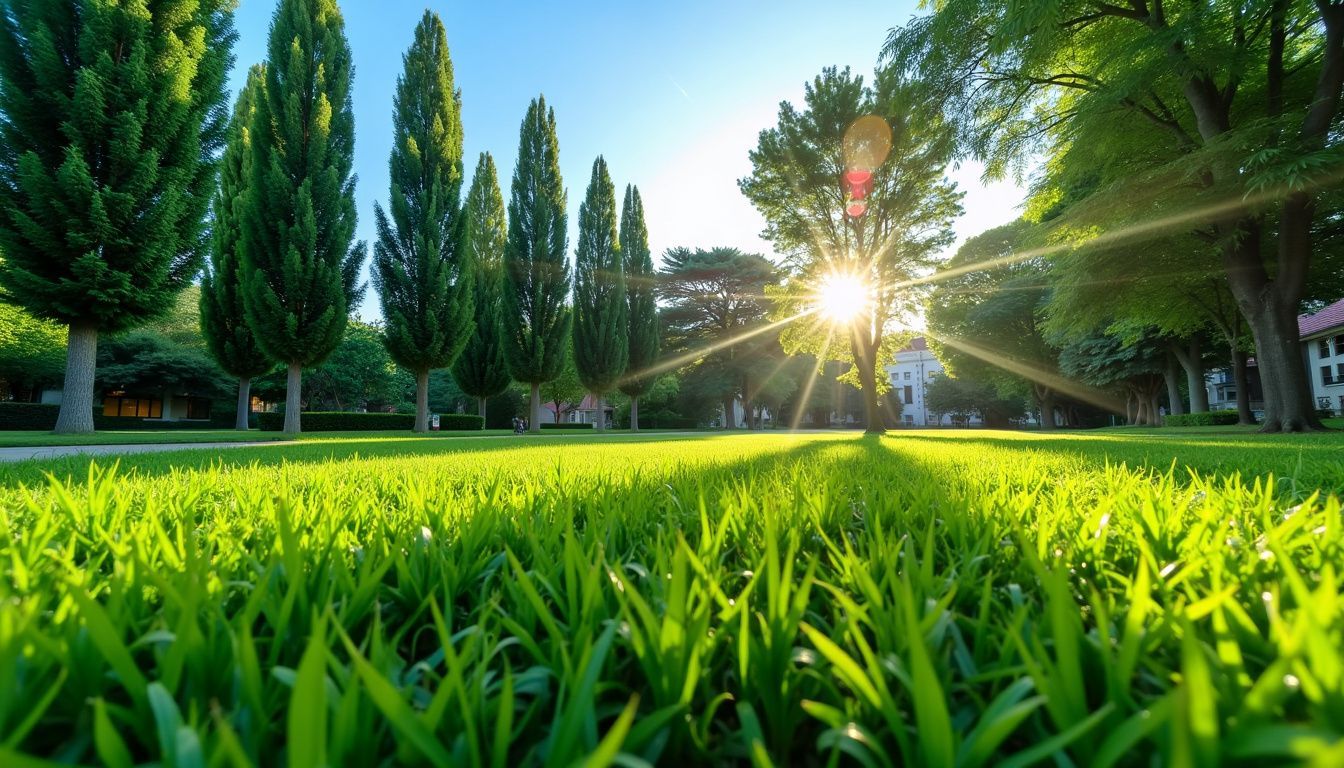Creating the perfect lawn seems like a secret formula that only experts know. This guide opens that vault, sharing what professionals often keep to themselves about achieving a lush, green yard.
Lawn care basics start with choosing grass that thrives in your area and understanding your soil’s needs through testing. Knowing how much seed, water, and fertilizer your lawn really needs can save time and effort while ensuring it looks its best.
However, perfection isn’t always possible or necessary. Professionals suggest embracing natural beauty and considering less traditional landscaping options to make maintenance easier.
Read on for tips you won’t find anywhere else. Let’s begin!
Lawn Care Basics for a Perfect Lawn
Lawns thrive with the right grass types. Test your soil to ensure it supports healthy growth.
Selecting top-performing grass varieties
Selecting the right grass variety boosts lawn health and beauty. Popular options include Kentucky bluegrass and perennial ryegrass, which thrive in various climates. These varieties resist pests and diseases.
They also establish quickly, offering a lush green lawn sooner.
Soil type and climate play crucial roles in selection. For warm areas, Bermuda grass shines as a top choice. It tolerates heat and drought well. Consider local conditions and choose grass varieties that suit them.
This choice sets the foundation for effective lawn care and maintenance.
Testing soil before planting
Testing soil before planting is crucial for a healthy lawn. Soil tests reveal the pH level and nutrient content. This information helps you choose the right grass care products. Poor soil may lead to weak grass and weed overgrowth.
Use a soil testing kit to gather samples from different areas of your yard. Send the samples to a lab for analysis. Follow their recommendations for fertilizer application and amendments.
Proper soil testing boosts lawn health management and supports long-term growth. It sets you up for success in your lawn renovation strategies.
Proper measurements for maintenance
Proper measurements help you maintain a healthy lawn. Measure your yard accurately to determine how much seed, fertilizer, and water you need. For lawn fertilization, use a spreader.
This tool ensures even distribution of nutrients. Calculate the square footage of your lawn by measuring its length and width. Multiply these numbers to find the total area.
For watering, create a schedule based on your grass type and climate. Most lawns need about one inch of water a week. Adjust your irrigation tips according to rainfall. Keep track of these measurements for effective lawn maintenance.
Follow these steps to achieve a green lawn with minimal effort.
Secrets from Pros for a Perfect Lawn
Many pros focus on practicality over perfection. They suggest embracing natural variations and considering different landscaping options for an appealing yard.
Stop chasing perfection
Chasing a perfect lawn can lead to frustration. Focus on achieving a healthy yard instead. Grass thrives best when you embrace its natural variations. Consider letting some weeds coexist.
They can provide nutrients and support soil health. Mowing techniques and watering schedules should match your grass type. Lawn maintenance tips emphasize adaptability over perfection.
By accepting imperfections, you create a resilient and vibrant landscape. Explore alternative landscaping options. These can enhance your yard while reducing care efforts. A little flexibility can lead to a greener lawn and a happier gardener.
Consider alternative landscaping options
Many homeowners focus on creating a perfect lawn. However, considering alternative landscaping options can reduce upkeep and enhance beauty. Native plants often require less water and fertilizer.
They thrive in local soils, reducing the need for extensive lawn care. Ground covers, like clover or moss, offer green coverage without the maintenance of traditional grass. These options can provide a lush look with fewer resources.
Embracing hardscapes can also elevate your yard’s appeal. Patios, walkways, and rocks add structure and reduce grassy areas. These features minimize the need for watering and mowing.
They create charming outdoor spaces that require less lawn care. Explore these ideas to create a stunning and sustainable landscape. Achieving a green lawn doesn’t always mean striving for perfection.
Focus on what works best for your environment and lifestyle.
Embrace imperfections
Embracing imperfections can enhance your lawn’s beauty. A few weeds or uneven patches won’t ruin your yard. In fact, they can add character. Many professional landscapers suggest allowing some natural growth.
This approach reduces maintenance stress. It also creates a more diverse ecosystem in your yard.
Focusing solely on uniformity can lead to frustration. Instead, value your lawn’s unique traits. Celebrate the patches that flourish and the areas that still need work. Natural lawn care solutions, like organic fertilizers, can help balance grass care.
Techniques for a healthy lawn often include accepting these quirks. Use expert lawn advice to manage imperfections and maintain a vibrant, green lawn.

